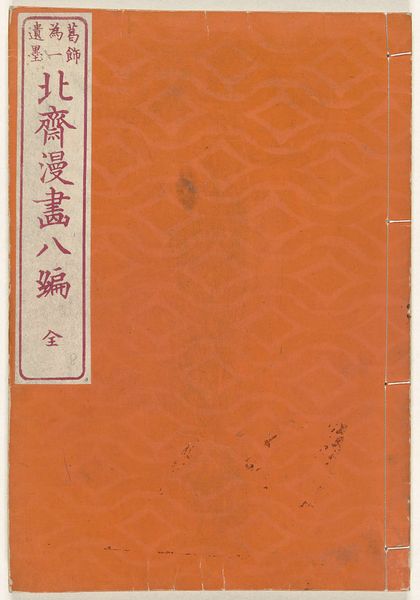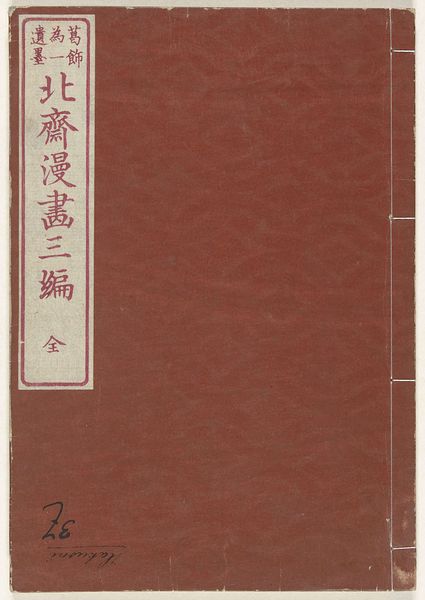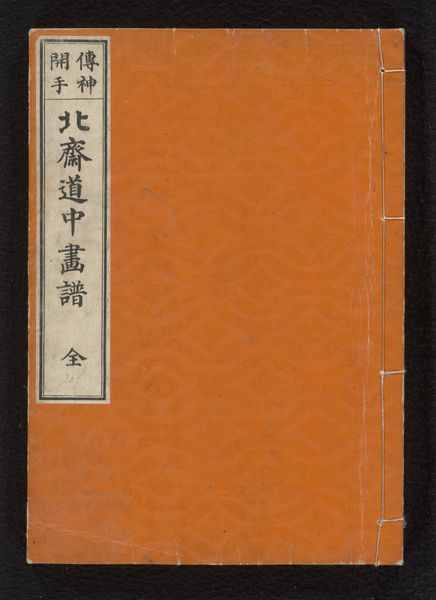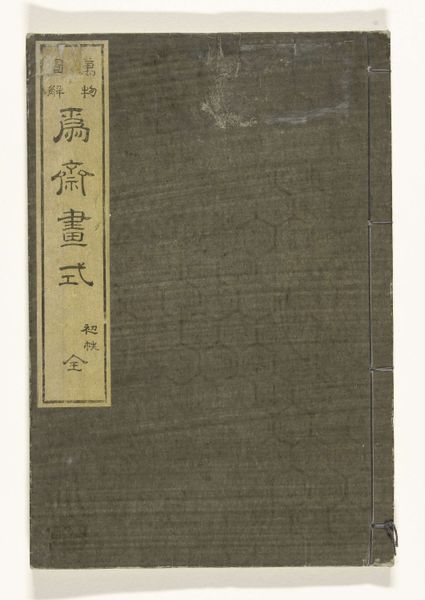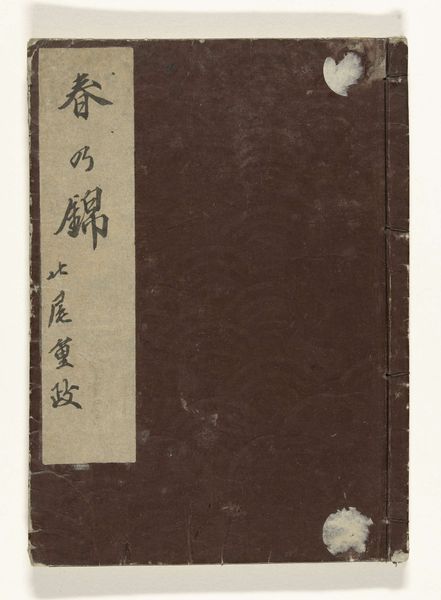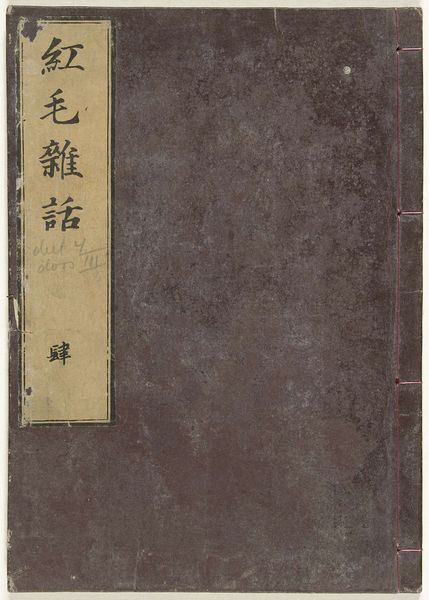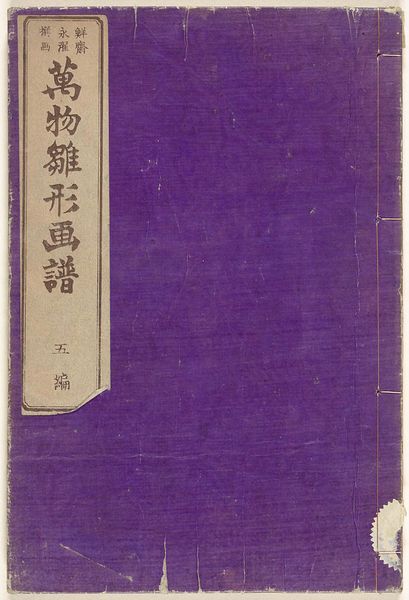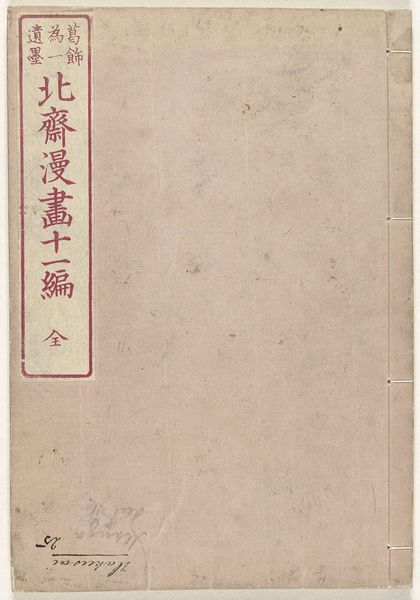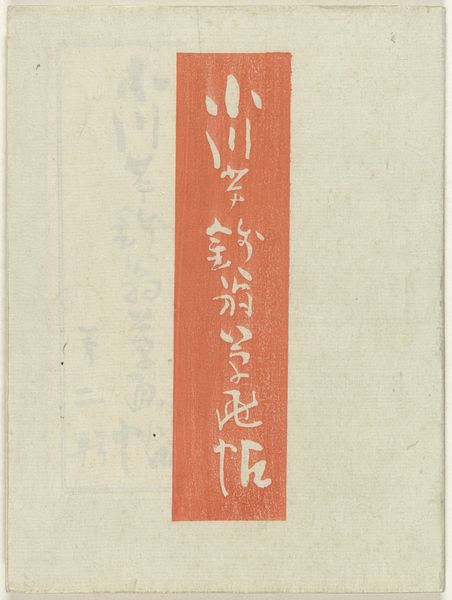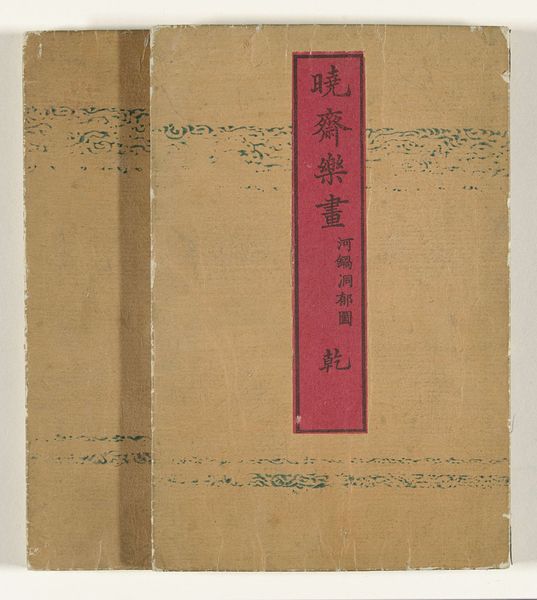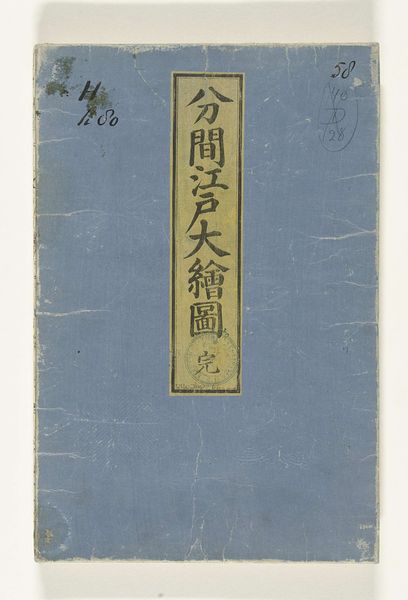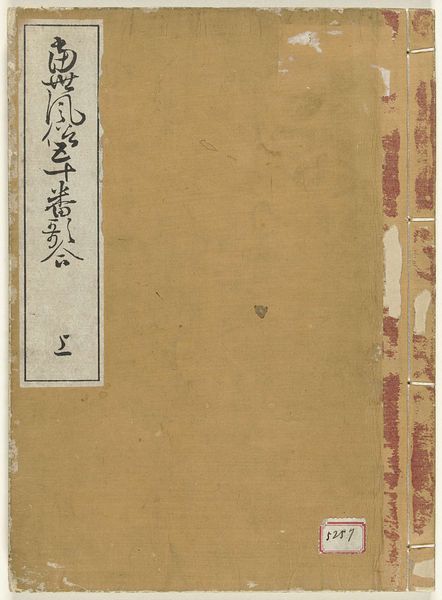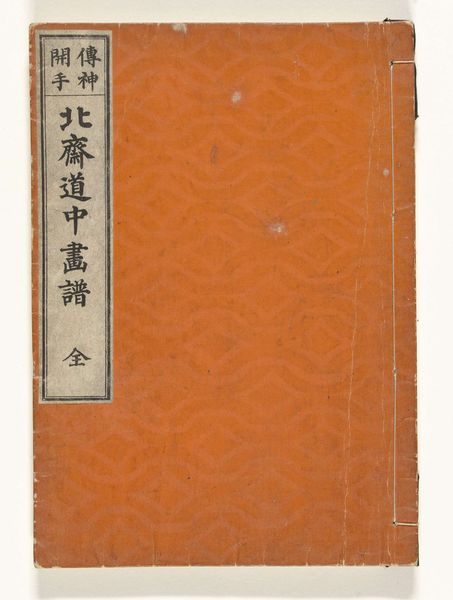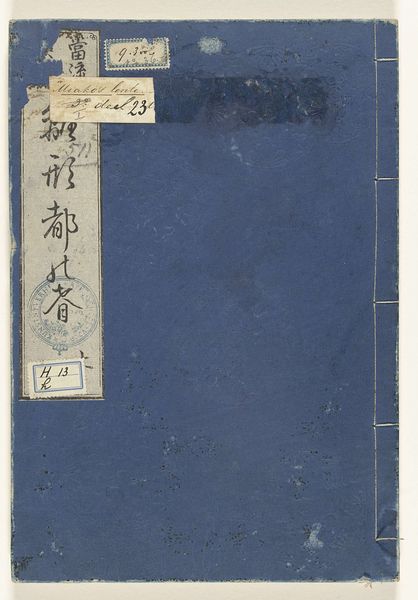
graphic-art, paper
#
graphic-art
#
asian-art
#
paper
#
coloured pencil
Dimensions: height 246 mm, width 178 mm
Copyright: Rijks Museum: Open Domain
Curator: What a captivating artifact! This is a page taken from "A Selection of Designs for Gold Lacquerwork", a collection dating from 1868 to 1912, attributed to Shunsen Ooka. It’s rendered in graphic art, primarily using colored pencils on paper. The work now resides here at the Rijksmuseum. Editor: The warmth of that persimmon color grabs me immediately. It feels both earthy and energized. There is something immediately comforting in its aged appearance, with an unassuming mood, until one recognizes this color in lacquerwork which immediately connotes wealth and exclusivity. What lies inside this beautiful design? Curator: Exactly! The cover itself, simple as it seems, echoes a longstanding cultural narrative of artistic and material restraint and elegance. Gold lacquer work represents status. The designs within provided craftsmen with inspiration, a visual language to translate aspirations into reality. The meticulous colored pencil renderings suggest the value of skill in an age of mechanization. It also indicates the painstaking preparation for lacquer design, an aesthetic rooted in Zen and Japanese principles of nature. Editor: It's fascinating how seemingly straightforward visuals hold so much layered information. In some ways, it feels rebellious against its own display of class distinction. Looking at that careful brushwork, and understanding its socio-political and material context, tells me about an unspoken power struggle embedded within aesthetic beauty. Is it a design book for those who want to improve, learn, or find alternatives, but remain invisible to authorities? Curator: Absolutely, there is an undercurrent of democratization through design visible in its intent. The cover's design also includes calligraphic text, with symbolism suggesting codified systems, similar to medieval guilds; these systems help transfer knowledge. Lacquer itself also carries further weight because its usage had also, at times, been limited. The selection included would potentially push boundaries for how these designs could circulate outside court circles. It speaks to cultural shifts in the late 19th and early 20th centuries, of burgeoning merchant classes and accessibility. Editor: That tension between the tradition, access, and evolution is really potent. I think, seeing this work reminds me how even design manuals can become powerful reflections of a changing world. Curator: Precisely, an intersection where the concrete and abstract converge, revealing histories etched in aesthetic choices and societal shifts.
Comments
No comments
Be the first to comment and join the conversation on the ultimate creative platform.
